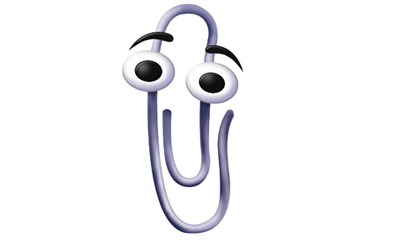Embedded User Assistance (UA) has always been considered a "Holy Grail" in software user assistance because it improves usability. Its immediacy makes embedded UA more relevant than ever: a new generation of software users want their answers quickly – and embedded UA fulfills this need.
The history
What we now collectively call “user assistance” has also been known as “Online Help”, “wizards”, “bubble help”, “What’s This? Help”, “diagnostic Help” and “decision support”.
Online Help made its first mainstream appearance in 1988 (with the Help in Microsoft QuickBASIC, a DOS application) and has been in refinement ever since. One early feature was “context-sensitivity”, which enabled Help systems to predict the most appropriate topic to present by providing hooks or cross-references between the application user interface and topics within the Help. Help systems have evolved over time (WinHelp, HTML Help, and browser-based Help), introducing various improvements that enhance the user experience, but they all have one thing in common – they open in a eparate window of the software application.
A logical progression was therefore to “interactive” or “dynamic” Help, where ...
Read more after login
tekom members can log in directly with their "My tekom" access data.
You are not yet a tekom member, but would like to read one or more articles in full? Then you have the opportunity to register on the internet portal of the technical journal 'tcworld' without obligation. Once you have registered, you can select any three specialist articles and view them in full for a period of two months. The selection will then be deleted and you can select three new articles for the next two months.
As a tekom member you benefit from the following advantages::
- Online access to all articles of the trade magazine 'tcworld magazine'
- Exclusive specialist articles from all areas of technical communication
- Regular new articles from over 300 authors
- The technical journal 'tcworld magazine' as a printed edition
- Reduced admission prices to tekom conferences
- Membership fees for tekom publications
- Access to 'my tekom', the web forum with job offers / job requests, appointments, expert advice, service provider file and much more
Login
Registration
Promised: The trade magazine 'tcworld magazine' is the best we have. And we don't make the choice easy for ourselves. Every month, the editorial staff of the technical journal 'tcworld magazine' publishes the latest articles by renowned authors. This demanding selection is available exclusively to members of tekom (as usual, including the printed edition).
The trade magazine 'tcworld magazine' stands for intelligently prepared specialist articles, texts written to the point, informative content, surprising insights, international perspectives and communicates technical communication in an understandable, fast, clear and uncomplicated way - exclusively for you.

